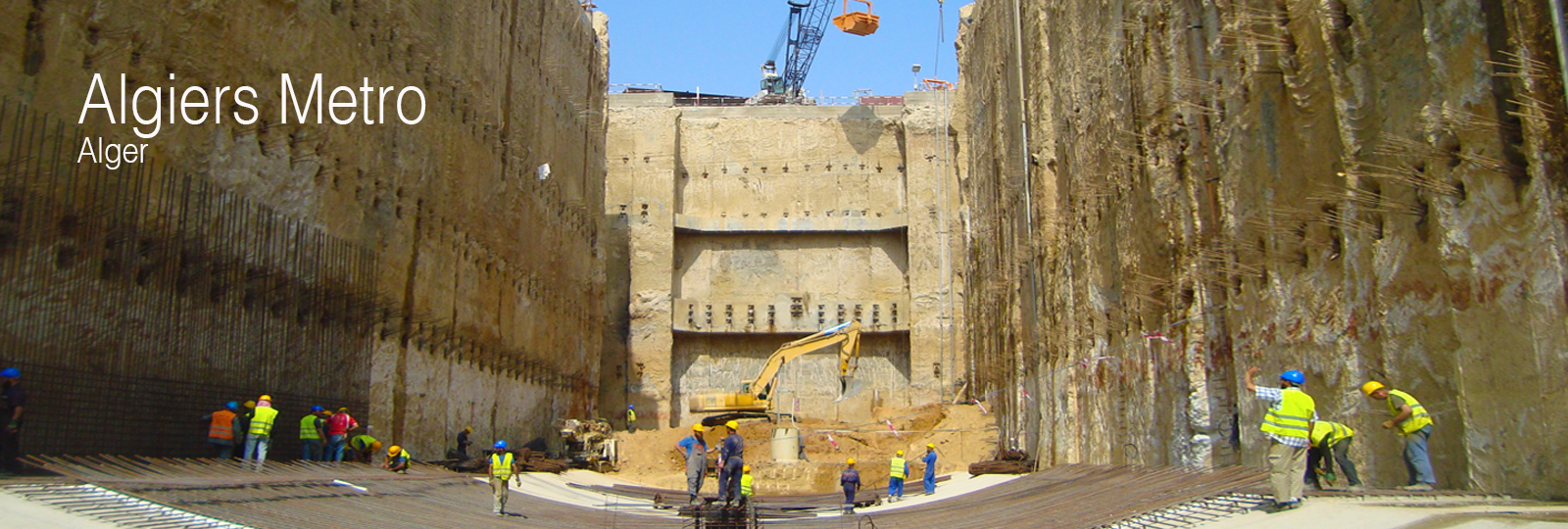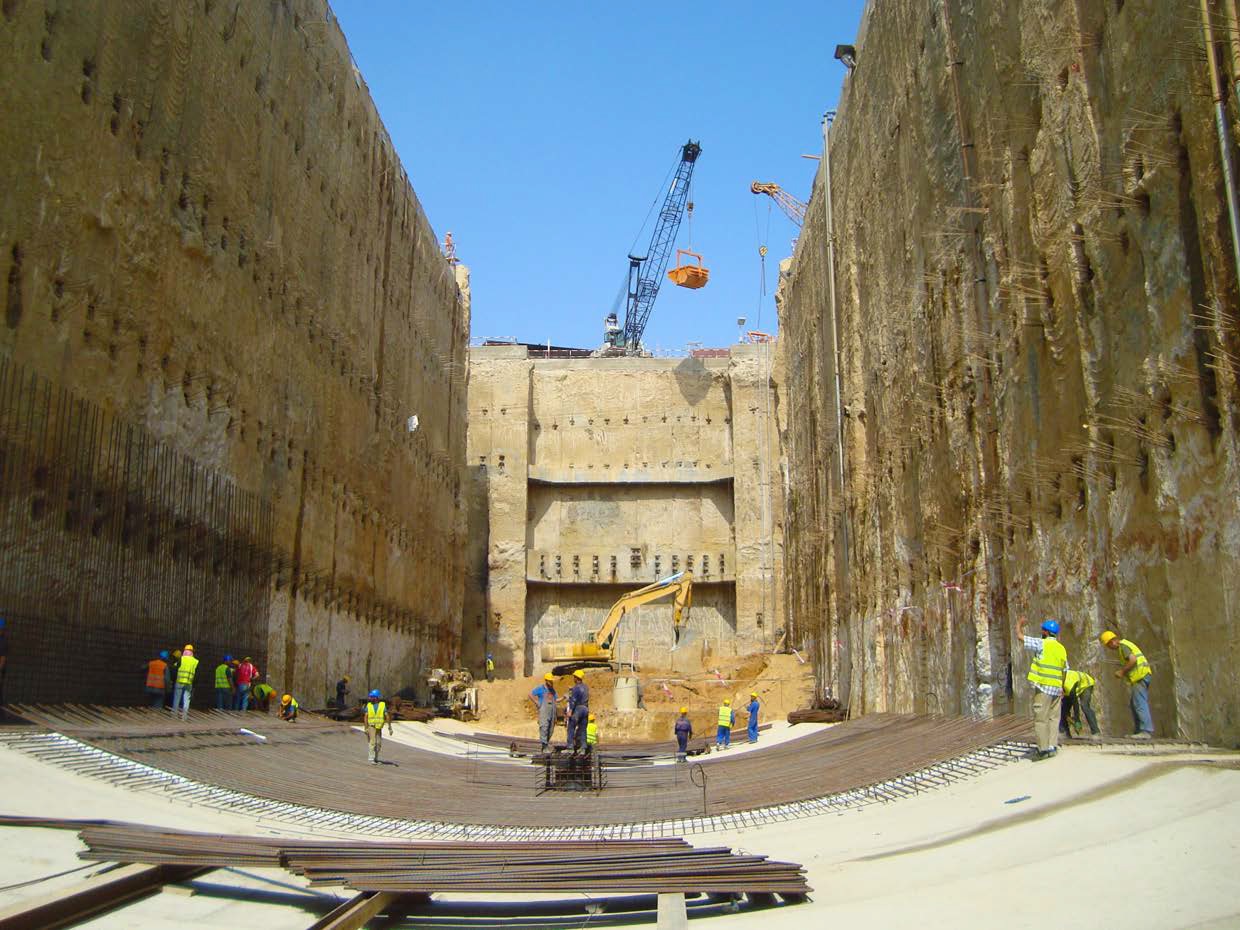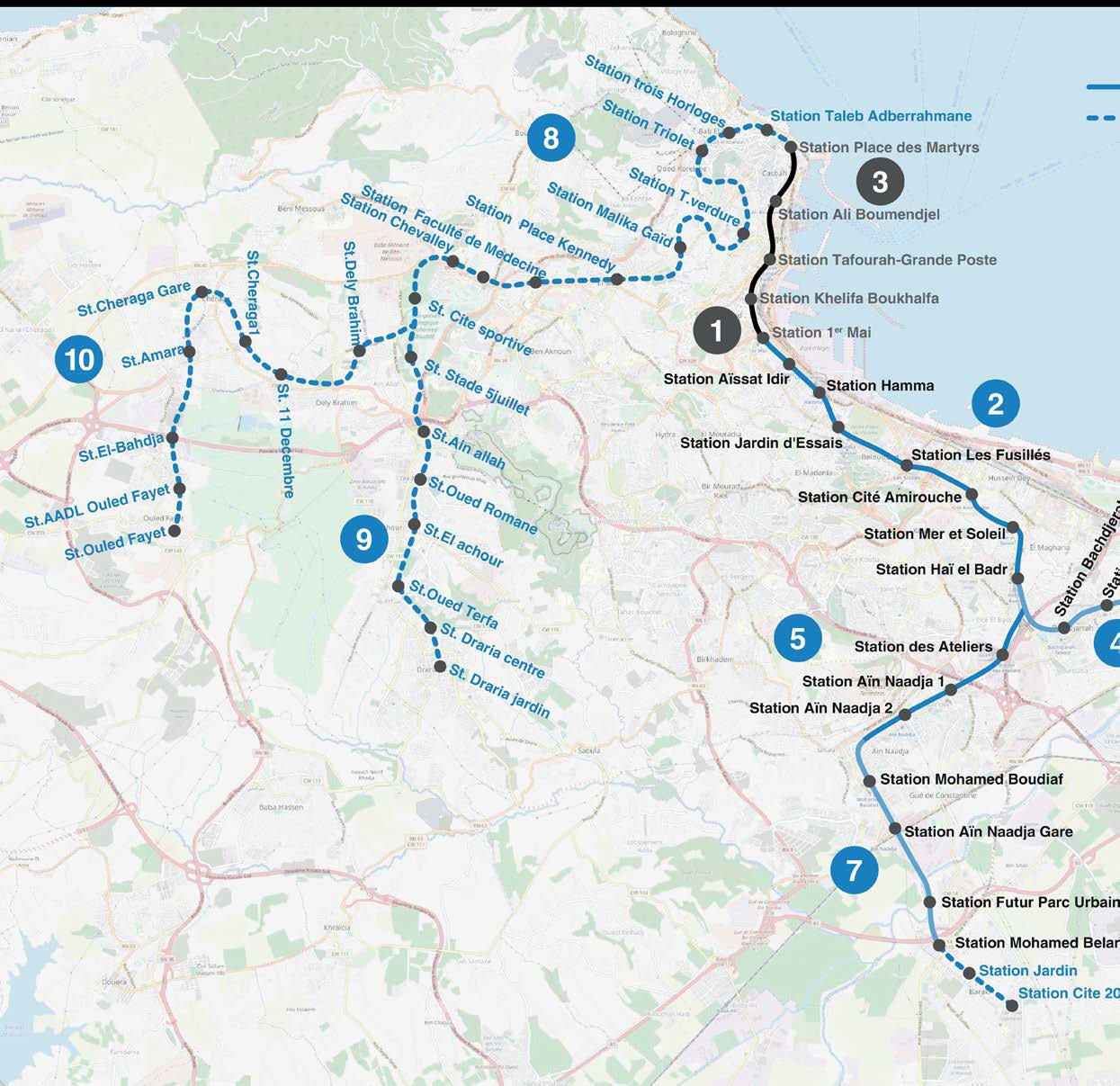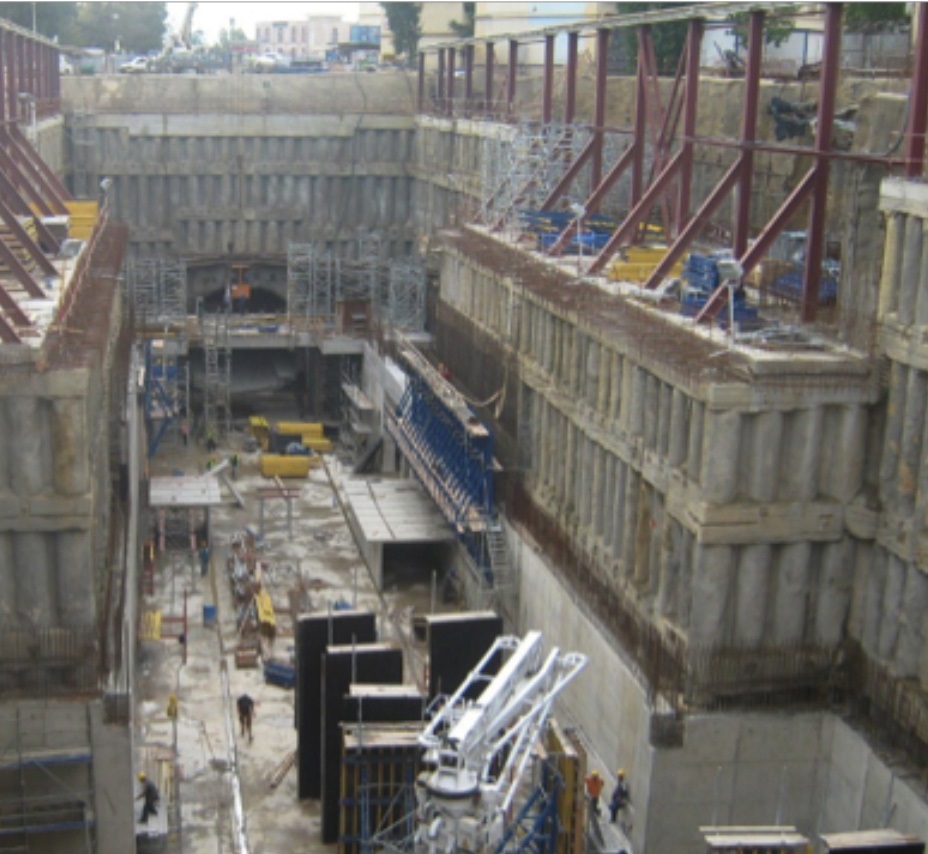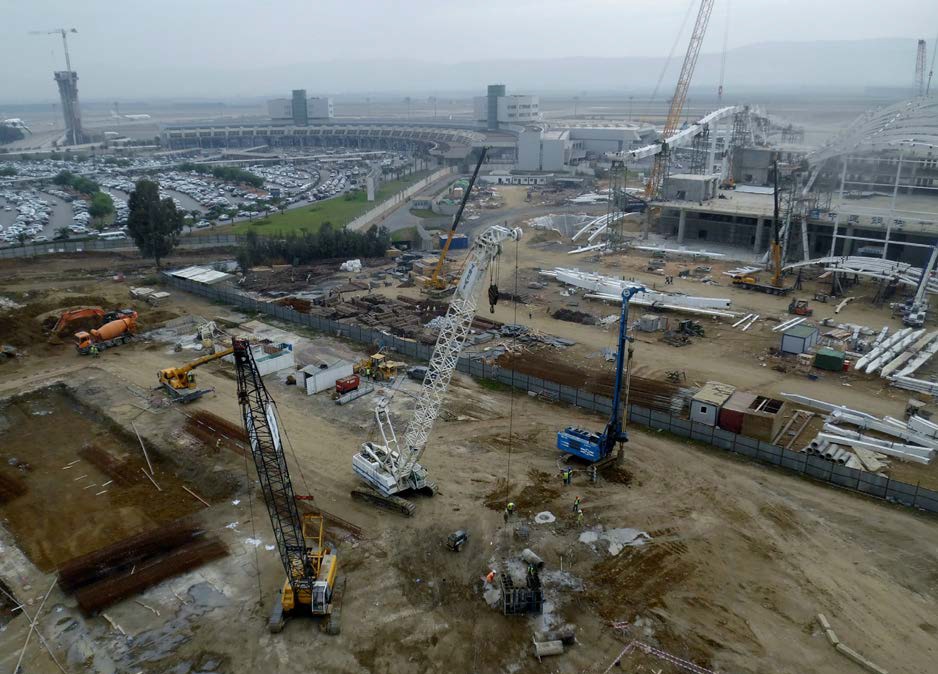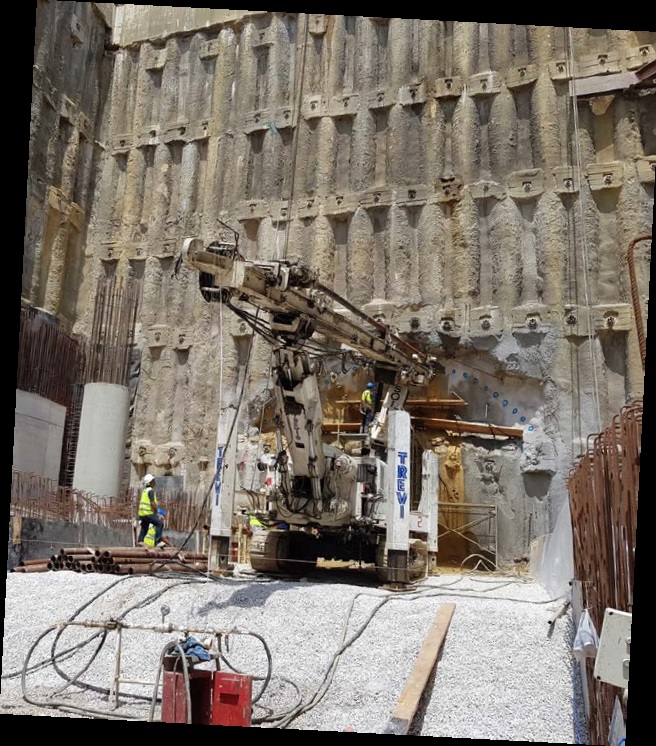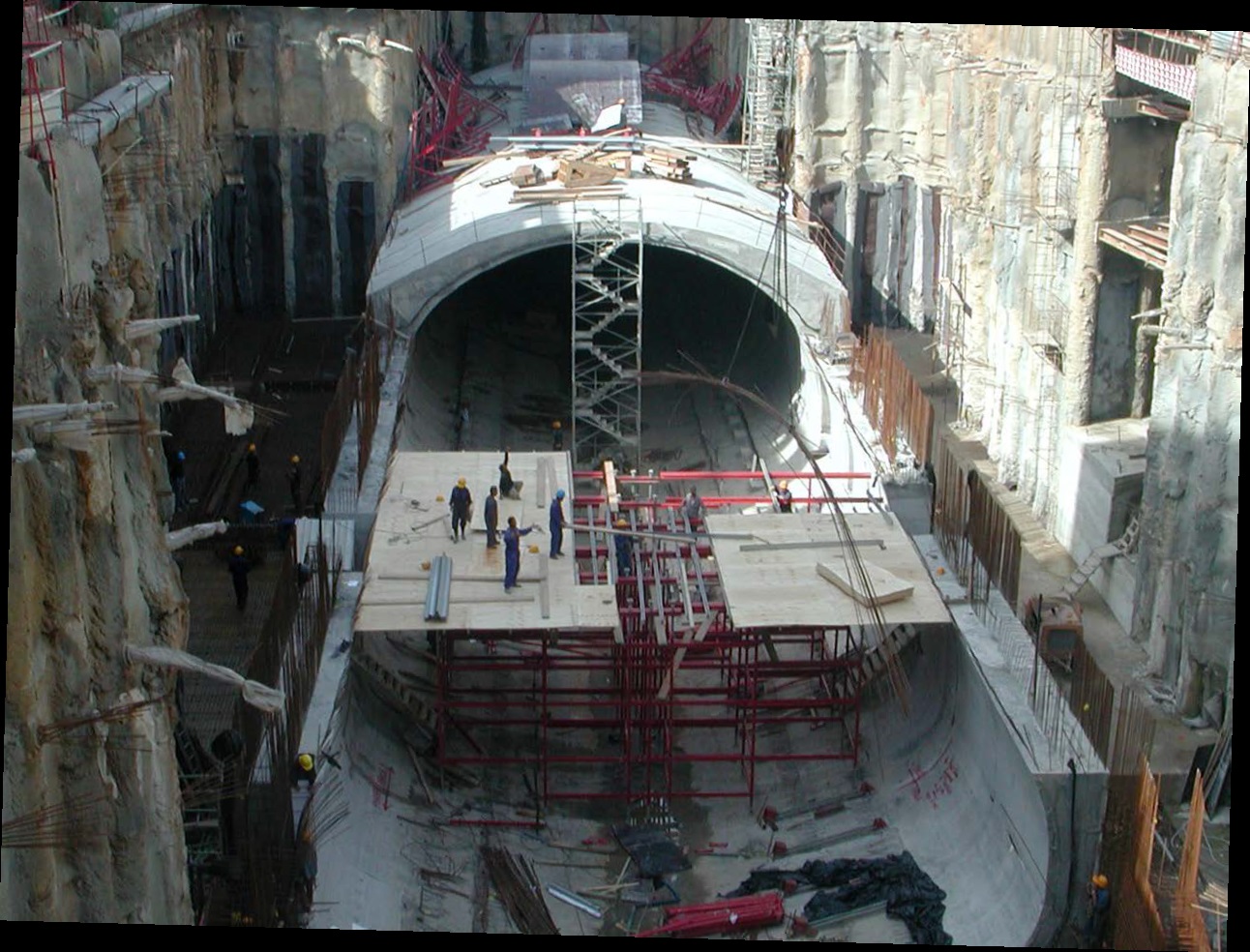Alger, Algeria
Like all major capitals in the world, the city of Algiers has developed its underground railway system. Regardless of the circumstantial uncertainties that this project has coped with, today the Algiers Metro has blossomed into reality.
The first project of the Algiers Metro dates back to 1928, but it was not until the end of the 1970s that the actual metro initiative was launched to face the demographic explosion of the city and the resulting need for public transport.
Started in the 1980s, its construction was slowed down due to financial difficulties and a sense of insecurity that marked the 1990s. The project was relaunched in 2003.
Geology
Trevi has played a key role in the development of this challenging scheme. Indeed, since 2004, Trevi has been involved in the construction of all foundations and soil consolidation activities associated to the project.
Due to the high heterogeneity of the soils underlying the city of Algiers, different technical solutions and equipment have been adopted for the construction of the retaining walls in correspondence of the stations and service shafts.
Continuous diaphragm walls and cased secant pile walls (CSP) have been implemented in the areas where the subsoil was characterized by fine-grained formations associated to a high water table, while contiguous bored pile walls were generally executed in cohesive soils.
Next generation equipment and tools have been used to this purpose.
The diaphragm walls have been performed by means of compact and semi-compact hydromills, thanks to their capability to cross and penetrate into dense and hard formations without producing noise and vibrations. Similarly, advanced rotary or CSP piling rigs have been used to execute the piles in the other locations. Temporary or permanent strand anchors have been generally adopted for anchoring the retaining structures. All ground anchors were performed step by step by following the excavation of the soil within the retaining structure and were subsequently assembled in dedicated sheltered areas established at site.
The double-fluid jet grouting technique has been widely adopted to improve the characteristics of the soil around the profile of the mined tunnels to be excavated or to create “impervious” plugs at the bottom of some stations in order to counteract the hydrostatic pressure.
| Owner | L’Entreprise du Métro d’Alger (EMA) |
| Main Contractor | Groupement GAAMA - Groupement GDTC - Groupement GDC |
| Duration of works: | 2006 (Section Hamma - Hai El Badr) - 2012 (Haï El Badr-El Harrach) 2014 (Hai El Badr-Ain Naadja) 2021 (El Harrach centre - Algiers Airport) in progress 2022 (Ain Naadja - Baraki) |
Works carried out
Line 01 - Phase 01
Section Hamma - Haï El Badr
TREVI was involved in the execution of foundations for the stations Hamma, Jardin d’Essai, Les Fusillés, Amirouche, Mer et Soleil and Haï El Badr, making part of the first section of Line 1.
With a linear length of 9.5 km, this section includes 10 stations connecting Grande Poste to Haï El Badr. This phase involved the execution of an exploration drilling campaign, bored piles, secant piles, a diaphragm wall with hydromill, ground anchors, jet grouting and micropiles.
Works lasted from September 2003 to February 2006 and were entrusted to the Algerian-German consortium Gaama, composed of Dywidag International (51%), Cosider TP (35%) and Infrafer (14%) for a total of Euro 145 million. The project management was entrusted to the French company SYSTRA.
Diaphragm wall 600-700 mm _20,586 m2
Ground anchors 39,134 LM
Jet Grouting 29,217 m3
Bored piles 12,398 LM
Secant piles 2,545 m2
Micropiles 1,133 LM
Algiers Metro Line 1 extension
Haï El Badr - El Harrach Centre
This 4-km-long section covers four stations (Bachdjarah Tennis, Bachdjarah, El Harrach Gare and El Harrach Centre), a 280-m-long viaduct, a 408.48-m-long rectangular tunnel, a 2166.54-m-long underground arched tunnel and three air extraction plants. The Algerian-German consortium GDCT, made up of DIWYDAG, COSIDER and TREVI, carried out the civil engineering works for this extension. The project was completed in 47 months.
Works carried out:
Diaphragm wall 1000 mm _46,788 m²
Piles 24,047 LM
Ground anchors 118,749 LM
Jet Grouting 26,729 m3
Micropiles 5216 LM
Sheet piles 2925 m²
Soldier pile wall 2520 LM
Algiers Metro Line 1 extension
Haï El Badr - Aïn Naadja
This section includes platform works, a 132,5-m-long viaduct, a 241,5-m-long rectangular tunnel, three stations (Des Ateliers - Aïn Naadja 1 - Aïn Naadja 2), a 1840,88-m-long underground arched tunnel and three air extraction plants.
The Algerian-German consortium GDC carried out the civil engineering works for this extension, for a total length of 3.6 km.
Works were executed from July 2011 to July 2014:
Piles (ø 600-800-1000-1200 mm): 39,773.88 LM
Soldier pile wall: 979 m²
Ground anchors: 114,042.65 LM
Sheet piles: 212 m²
Algiers Metro Line 1 extension
El Harrach - Bab Ezzouar - Algiers Airport
The construction works for the extension of Line 1 of the Algiers Metro, connecting the city centre of El Harrach to the Houari Boumédiène International Airport, were entrusted to Cosider TP and have been underway since June 2015.
With a length of 9.5 km and 9 stations, this line will serve densely populated areas such as Beaulieu, Oued Smar, Cité 5 juillet, Bab Ezzouar, the University Centre of El Harrach, the Business Centre of Bab Ezzouar and the Houari
Boumédiène University. This line will also link the tramway to the Houari Boumédiène University intersection and will provide this station with a multimodal transportation.
The ten stations making part of this extension are: Hassan Badi, Pôle Universitaire, Beaulieu, Oued Smar, Université Houari Boumediene, Rabia Tahar, Smail Yefsah, Centre des Affaires and Aéroport.
Works carried out:
Diaphragm wall: 111 096.04 m²
Piles: 52 076.10 LM
Micropiles: 7 810.85 LM
Anchors: 19 514 LM
Jet Grouting: 87 576.278 m3
Algiers Metro Line 1 extension
Aïn Nâadja - Baraki
The extension of the Algiers Metro going from Aïn Nâadja to Baraki stretches over 6 km with 3 stations and a 1,453.50-m-long viaduct that connects the Mohamed Boudiaf station to the Mohamed Belarbi station. It crosses the SNTF railway line, the National Road N°38 and Oued El Harrach and comprises two elevated stations: the Aïn Nâadja Gare station and the Futur Parc Urbain station.
Railway Station of Gué de Constantine and the future intermodal station of this municipality. COSIDER TP was awarded the civil engineering contract for this extension. The stations of this extension currently under construction are: Mohamed Boudiaf, Ain Nâadja, Futur Parc Urbain and Mohamed Belarbi.
Works for the following stations are in progress.
Station Jardin - Station Cité 2004
Works carried out:
Piles (ø 800-1000-1200 and 1500 mm): 46,024.27 LM
Ground anchors: 91,200 LM
Forepoling: 42 838.73 LM
Diaphragm wall: 42800 m2




